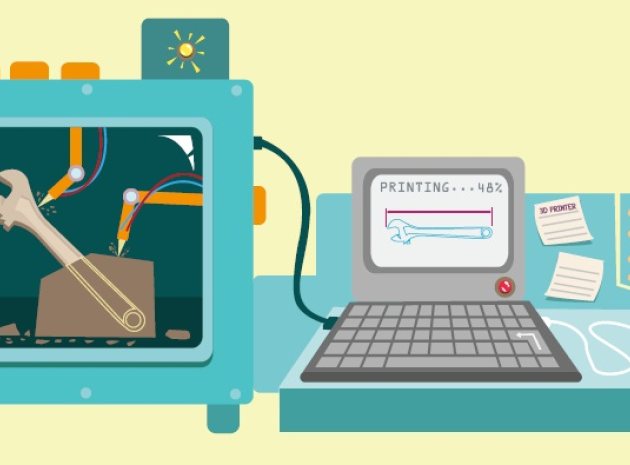Sound, long-term investment – or the latest techo-fad? Paul Croft makes the case for bringing 3D printers into your school…
There has been a huge amount of interest in 3D printing over the last couple of years. Many industries are already starting to reap the rewards of this game changing technology. Public awareness is increasing and more people are accessing the equipment in schools, colleges, universities, shops and public maker spaces.
What is it and why the excitement? 3D printing or Additive Manufacturing is the process of building things by adding layer upon layer. There are different types of this process that have a variety of benefits, but the fact that we now have the ability to form objects that weren’t previously possible in short time frames is opening up a whole new world of possibilities. The financial, environmental and social impact is already being felt around the globe as companies and individuals embrace this catalyst for innovation.
If we are to capitalise on these opportunities we need to remove some barriers. As with any technological innovation the role of education in making the required skills sets understood and available is of paramount importance. Educators are relishing the responsibility they have in thinking differently to engage youngsters in this digital age. Some pioneers incorporate technology as tools for learning across the curriculum rather than viewing it as a D&T task.
Every teacher knows that if the class is engaged, learning is fun for all parties! STEM initiatives are making great efforts to inspire learning in these areas to plug the skills gap in present work forces and set students up for the unpredictable work demands of the future. 3D printing is the tool that will provide the catalyst to make this a realistic goal thanks to its multidisciplinary nature.
Hundreds of institutions have already committed to join the revolution but there are a number of misconceptions that must be addressed in order for everybody to incorporate 3d printing into their teachings.
Facts of the matter
The first misconception is that the seemingly prohibitive cost diminishes the learning benefits. This is simply not true. Certainly, some of the larger machines cost tens of thousands - but now you can get involved in 3D printing for a few hundred pounds. With Open source software options, for designing and model preparation, removing the expense of license concerns and consumables available for less than £30, cost isn’t the barrier it is perceived to be.
The next misconception is that 3D printing is very difficult and requires expert skill. Again this isn’t the case. Many of the affordable desktop printers require little technical experience and can be set up and printing quickly. Just like in the music industry you can now download prepared files to print. These models have relevance in many subjects, be it pyramids for history, body parts for
biology or parabolic shapes for maths. Making learning tangible and interactive has established benefits and 3D printing enables this.
The learning benefits don’t stop there as the content creation element of the process offers opportunities for new skill acquisition. 3D scanners, apps and associated software are developing daily and are a fantastic fit with many subjects. In Northern Ireland pupils were scanning the historical city walls of Derry and then 3d printing to scale – imagine how many subject areas this project covers, not to mention the community benefits.
Thanks to the explosion of interest in 3D printing CAD programs are becoming more intuitive and no longer require expert skills. With a few basic pointers teachers and pupils can unleash their creativity and experience the intrinsic satisfaction of making their idea a reality. Whether it’s modeling parts for physics experiments or prototyping concepts for product design, by learning through doing and using technology as a facilitator, disengagement can be a thing of the past.
Many schools believe they don’t have time to incorporate new methods due to existing pressures, performance metrics and the misconception that 3D printing takes a long time. As with most forms of manufacturing large, complicated pieces do take hours to make, however, smaller models that have the same learning benefits can be printed in lesson timeframes. Besides, the pull of 3D printing is so strong with pupils that the learning is not restricted by the bell ringing. Teachers have testified, ‘Year 8 are working on a fragrance branding project and this morning have designed some really intricate tops for their bottles. These are being printed right now and the pupils are so excited they want to come back at the end of today to see them (even though they’re breaking up for half term)!”
In summary, the benefits of incorporating 3D printing across the curriculum really cannot be contested… what are you waiting for?
About the author
Paul Croft is a director of UltimakerGB, and the founder of the CREATE Education Project.
(ultimaker.com, CREATEeducation.co.uk)









